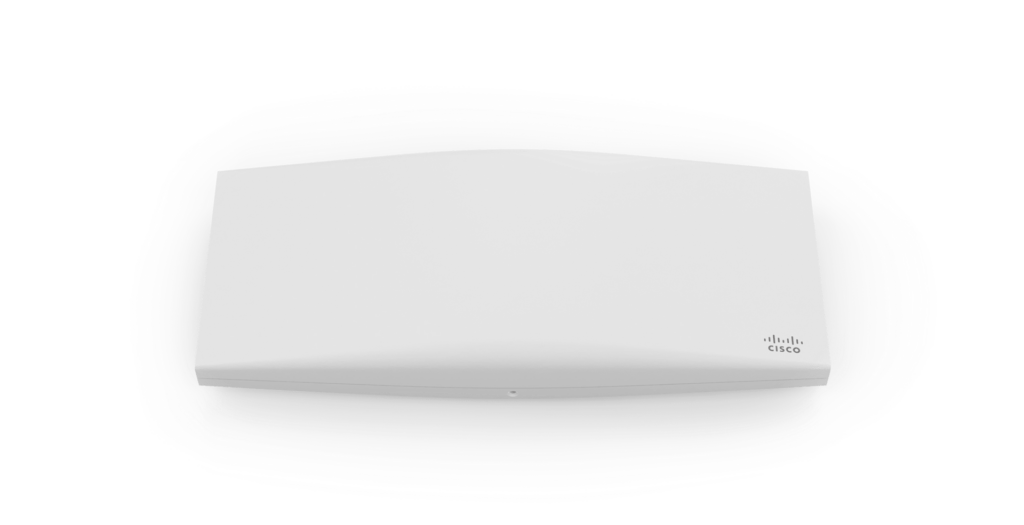
Cisco Meraki is renowned for its innovative wireless solutions, providing high-performance access points that cater to various networking needs. The Meraki MR series exemplifies this commitment, offering a range of models designed to support next-generation wireless deployments. Among these models, the Meraki MR36 and MR44 stand out, each bringing unique features and capabilities to the table. Whether for small offices or large enterprises, the MR series ensures robust connectivity, advanced security, and seamless management through the Meraki cloud platform.
The MR36 is a cloud-managed 2×2:2 802.11ax access point that excels in environments such as offices, schools, hospitals, and retail spaces. It offers high throughput, enterprise-grade security, and simple management, making it ideal for various next-generation deployments. Meanwhile, the Meraki MR44 is designed to meet the demands of more performance-intensive environments, featuring a dual-radio aggregate frame rate of 2.7 Gbps and advanced hardware capabilities.
Both access points leverage the power of Cisco Meraki’s cloud management, ensuring simplified deployment and continuous optimization. They include a range of features designed to enhance wireless performance, provide real-time security, and facilitate easy management. This comprehensive comparison of the Meraki MR36 vs. MR44 will help you understand their differences, shared features, and suitability for different networking scenarios.

When evaluating the Meraki MR36 vs MR44, the distinctions between these two access points become evident in their performance specifications and hardware setups. The MR36 is designed with a 2×2:2 MU-MIMO configuration, achieving a maximum data rate of 1.5 Gbps. This configuration makes it suitable for environments with moderate client density, such as small to medium-sized offices, schools, and retail spaces. Its dual-radio setup, which includes dedicated radios for WIDS/WIPS and Bluetooth, ensures reliable wireless security and efficient location-based services.
Conversely, the Meraki MR44 boasts a more advanced hardware configuration with a 2×2:2 MU-MIMO for 2.4 GHz and 4×4:4 MU-MIMO for 5 GHz, resulting in a higher aggregate frame rate of 2.7 Gbps. This enhanced capacity makes the MR44 particularly well-suited for high-density environments where robust and seamless connectivity is essential for numerous concurrent users and performance-intensive applications, such as HD video streaming and VoIP.
Power consumption and interface options further differentiate the MR36 from the MR44. The MR36, with a maximum power consumption of 15W, is compatible with standard PoE environments, simplifying deployment in various settings. In contrast, the MR44 requires up to 30W of power, necessitating PoE+ for optimal operation. Additionally, the MR44 features a 2.5G Ethernet port, which provides higher wired backhaul speeds compared to the 1G Ethernet port found on the MR36. This capability ensures that the MR44 can accommodate higher data loads, making it an ideal choice for networks with substantial traffic and advanced performance requirements.
Overall, while both access points deliver reliable performance and security, the MR44’s superior hardware and higher capacity make it the better option for more demanding, high-density environments. The MR36, meanwhile, remains a strong contender for moderate-density settings where cost-effectiveness and reliable performance are key considerations.
Both the Meraki MR36 and MR44 utilize Wi-Fi 6 (802.11ax) technology, which significantly boosts wireless performance and efficiency. This latest standard incorporates features such as MU-MIMO and OFDMA, enabling simultaneous data transmission to multiple devices. In high-density environments, this translates to improved overall network capacity and a superior user experience, as numerous clients can receive data concurrently without a drop in performance.
Security is paramount in modern wireless networks, and the MR36 and MR44 are equipped with comprehensive security features. They include AES hardware-based encryption and 802.1X authentication support, ensuring secure access for authorized users. Additionally, both models have a dedicated third radio for continuous Wireless Intrusion Detection and Prevention System (WIDS/WIPS) and RF analytics. This setup ensures ongoing protection against wireless threats and unauthorized access, maintaining the integrity and safety of your network.
A key advantage of the MR36 and MR44 is their integration with Cisco Meraki’s cloud management platform. This platform combines robust cloud-based control with high-performance hardware, simplifying network management. The intuitive web-based interface allows for quick deployment and configuration, negating the need for extensive training or specialized certifications. This ease of management ensures that network https://www.stratusinfosystems.com/wp-content/uploads/2018/01/123-2-2.jpgistrators can oversee and control the network remotely, minimizing the need for on-site IT personnel and reducing operational complexity.
Maintaining up-to-date firmware is critical for security and performance, and both the MR36 and MR44 handle this effortlessly through automatic updates. These updates are delivered via the cloud, ensuring that your access points always run the latest software without manual intervention. This automatic process helps keep your network secure with the latest patches and improvements, saving time and reducing the risk of vulnerabilities.
Both access points feature advanced RF optimization, a crucial function for maintaining network performance. This system collects RF data through a dedicated third radio, which is then analyzed in the Meraki cloud. The cloud-based system automatically adjusts channel selection, transmission power, and client connection settings to optimize performance, even in challenging RF environments. This ensures that the network maintains high performance and reliability at all times.
Effective traffic management is essential for prioritizing critical applications and maintaining optimal network performance. The MR36 and MR44 both include an integrated layer 7 packet inspection and control engine, which allows for detailed Quality of Service (QoS) policy configuration. These policies can prioritize mission-critical applications such as voice and video, while limiting bandwidth for less essential traffic like peer-to-peer sharing and recreational streaming. This level of control can be applied across networks, specific SSIDs, user groups, or individual users, offering unparalleled flexibility and management capabilities.
Choosing between the Meraki MR36 and MR44 depends on the specific needs and scale of your deployment. If your primary requirement is a cost-effective, reliable access point for environments with moderate client density, the Meraki MR36 is an excellent option. It provides robust performance and security features, making it suitable for offices, schools, and smaller retail spaces where reliable connectivity is essential but extreme performance isn’t critical.
On the other hand, the Meraki MR44 is designed for environments demanding higher performance and supporting a larger number of concurrent users. Its superior throughput and enhanced hardware capabilities make it ideal for high-density deployments, such as large enterprises, educational campuses, and healthcare facilities. The ability of Meraki MR44 to handle more clients and deliver higher data rates ensures that it can meet the demands of performance-intensive applications like HD video streaming and real-time voice communications.
Your specific network requirements and the scale of your deployment should guide the decision between the Meraki MR36 and MR44. Both models offer the reliability and advanced features of Cisco Meraki’s cloud-managed platform, ensuring that whichever you choose, you will benefit from high-performance wireless networking with simplified management and robust security.
Ready to enhance your network with Cisco Meraki solutions, or do you still have some questions? Contact us today.

Stay informed about our newest releases and updates